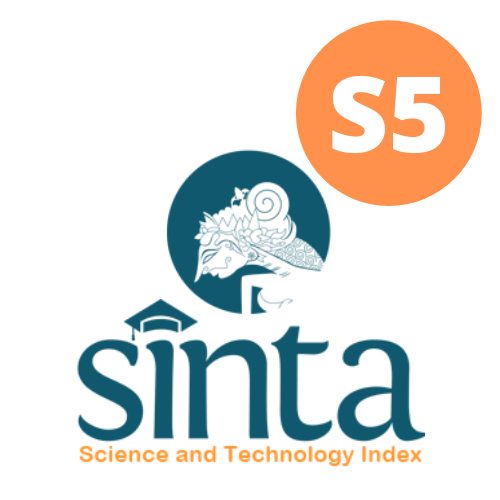Digital Innovation through Instagram-Based Augmented Reality in Introduction to the SKCK Making Process for the South Sulawesi Regional Police
Abstract
Digital innovation in public services has gained significant global attention, particularly in enhancing service delivery and user engagement. This study explores the use of Instagram-based Augmented Reality (AR) as a novel approach to inform and educate the public about the procedure for obtaining a Surat Keterangan Catatan Kepolisian (SKCK) at the South Sulawesi Regional Police. Traditional methods, such as printed brochures and static websites, often fail to provide clear and accessible guidance, leading to inefficiencies and user frustration. In contrast, Instagram-based AR offers an interactive, visually engaging experience, enabling users to receive real-time, step-by-step instructions via AR filters. This approach simplifies the SKCK application process by providing dynamic and user-friendly guidance, reducing errors and time spent at police stations. A trial involving surveys and user feedback was conducted to evaluate the effectiveness of this digital tool. The results indicate that AR significantly improves user understanding, satisfaction, and engagement compared to conventional methods. This study demonstrates the potential of AR to enhance public service delivery and offers insights into the application of digital technologies in governmental processes. The proposed innovation is not only an effective solution for the SKCK process but also sets a precedent for future digital transformations in public services.
References
[2] L. Mattsson and P. Andersson, “Private-Public Interaction in Public Service Innovation Processes- Business Model Challenges for a Start-Up EdTech Firm,” J. Bus. Ind. Mark., vol. 34, no. 5, pp. 1106–1118, 2019, doi: 10.1108/jbim-10-2018-0297.
[3] M. Eckert, J. S. Volmerg, and C. M. Friedrich, “Augmented Reality in Medicine: Systematic and Bibliographic Review,” Jmir Mhealth Uhealth, vol. 7, no. 4, p. e10967, 2019, doi: 10.2196/10967.
[4] K. Kazemzadeh, “Advances in Artificial Intelligence, Robotics, Augmented and Virtual Reality in Neurosurgery,” Front. Surg., vol. 10, 2023, doi: 10.3389/fsurg.2023.1241923.
[5] W. N. Hidayat, M. I. Ibad, M. N. Sofiana, M. I. Aulia, T. A. Sutikno, and R. Wakhidah, “Magic Book with Augmented Reality Technology for Introducing Rare Animal,” 2020 3rd Int. Conf. Comput. Informatics Eng. IC2IE 2020, pp. 355–360, 2020, doi: 10.1109/IC2IE50715.2020.9274590.
[6] E. R. Nainggolan et al., “The Implementation of Augmented Reality as Learning Media in Introducing Animals for Early Childhood Education,” 2018 6th Int. Conf. Cyber IT Serv. Manag. CITSM 2018, no. Citsm, 2019, doi: 10.1109/CITSM.2018.8674350.
[7] J. W. Lai and K. H. Cheong, “Educational Opportunities and Challenges in Augmented Reality: Featuring Implementations in Physics Education,” Ieee Access, vol. 10, pp. 43143–43158, 2022, doi: 10.1109/access.2022.3166478.
[8] R. N. Khairani, “Application of Augmented Reality on Chemistry Learning: A Systematic Review,” J. Penelit. Pendidik. Ipa, vol. 9, no. 11, pp. 1221–1228, 2023, doi: 10.29303/jppipa.v9i11.4412.
[9] E. Quqandi, M. Joy, I. Drumm, and M. Rushton, “Augmented Reality in Supporting Healthcare and Nursing Independent Learning,” Cin Comput. Informatics Nurs., vol. 41, no. 5, pp. 281–291, 2022, doi: 10.1097/cin.0000000000000910.
[10] M. K. Bekele, R. Pierdicca, E. Frontoni, E. S. Malinverni, and J. Gain, “A Survey of Augmented, Virtual, and Mixed Reality for Cultural Heritage,” J. Comput. Cult. Herit., vol. 11, no. 2, pp. 1–36, 2018, doi: 10.1145/3145534.
[11] M. J. Pelletier, A. Krallman, F. G. Adams, and T. Hancock, “One Size Doesn’t Fit All: A Uses and Gratifications Analysis of Social Media Platforms,” J. Res. Interact. Mark., vol. 14, no. 2, pp. 269–284, 2020, doi: 10.1108/jrim-10-2019-0159.
[12] A. Javornik, B. Marder, M. Pizzetti, and L. Warlop, “Augmented Self - The Effects of Virtual Face Augmentation on Consumers’ Self-Concept,” J. Bus. Res., vol. 130, pp. 170–187, 2021, doi: 10.1016/j.jbusres.2021.03.026.
[13] I. Sukmawati, “Augmented Reality in Instagram Story Filter for Increasing Awareness Through Learning Interactivity and Enjoyment,” 2022, doi: 10.2991/assehr.k.220601.050.
[14] W. A. Dewandono, “Development of Learning Media Based on Augmented Reality (AR) Instagram Filter in Shokyu Hyoki 1,” J. Japanese Lang. Educ. Linguist., vol. 8, no. 1, pp. 63–76, 2024, doi: 10.18196/jjlel.v8i1.20628.
[15] M. B. Musah et al., “Testing the validity of academic staff performance predictors and their effects on workforce performance,” Int. J. Eval. Res. Educ., vol. 12, no. 2, pp. 941–955, 2023, doi: 10.11591/ijere.v12i2.24230.

This work is licensed under a Creative Commons Attribution 4.0 International License.
















